2025
Comparably’s Best Company Outlook
* Providing engineering services in these locations through SWCA Environmental Consulting & Engineering, Inc., an affiliate of SWCA.

From the experts we hire, to the clients we partner with, our greatest opportunity for success lies in our ability to bring the best team together for every project.
That’s why:
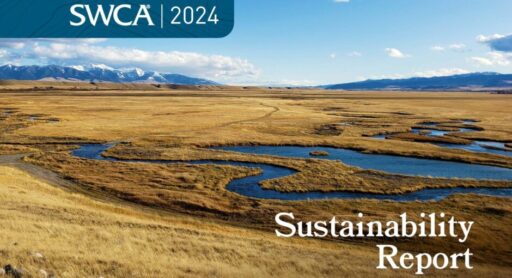
At SWCA, sustainability means balancing humanity’s social, economic, and environmental needs to provide a healthy planet for future generations.
SWCA employs smart, talented, problem-solvers dedicated to our purpose of preserving natural and cultural resources for tomorrow while enabling projects that benefit people today.
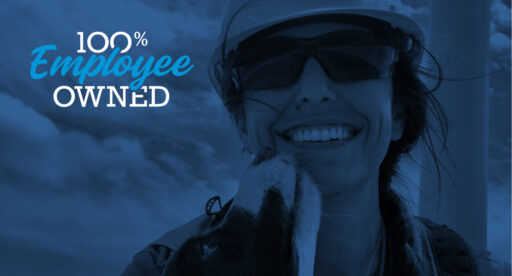
At SWCA, you’re not just an employee. You’re an owner. Everyone you work with has a stake in your success, so your hard work pays off – for the clients, for the company, and for your retirement goals.
Meet Linnea Spears-Lebrun, Senior Restoration Ecologist at SWCA
One never knows where inspiration can find us, but for Linnea Spears-Lebrun, it came from an icy voyage to the extremities of the Earth.
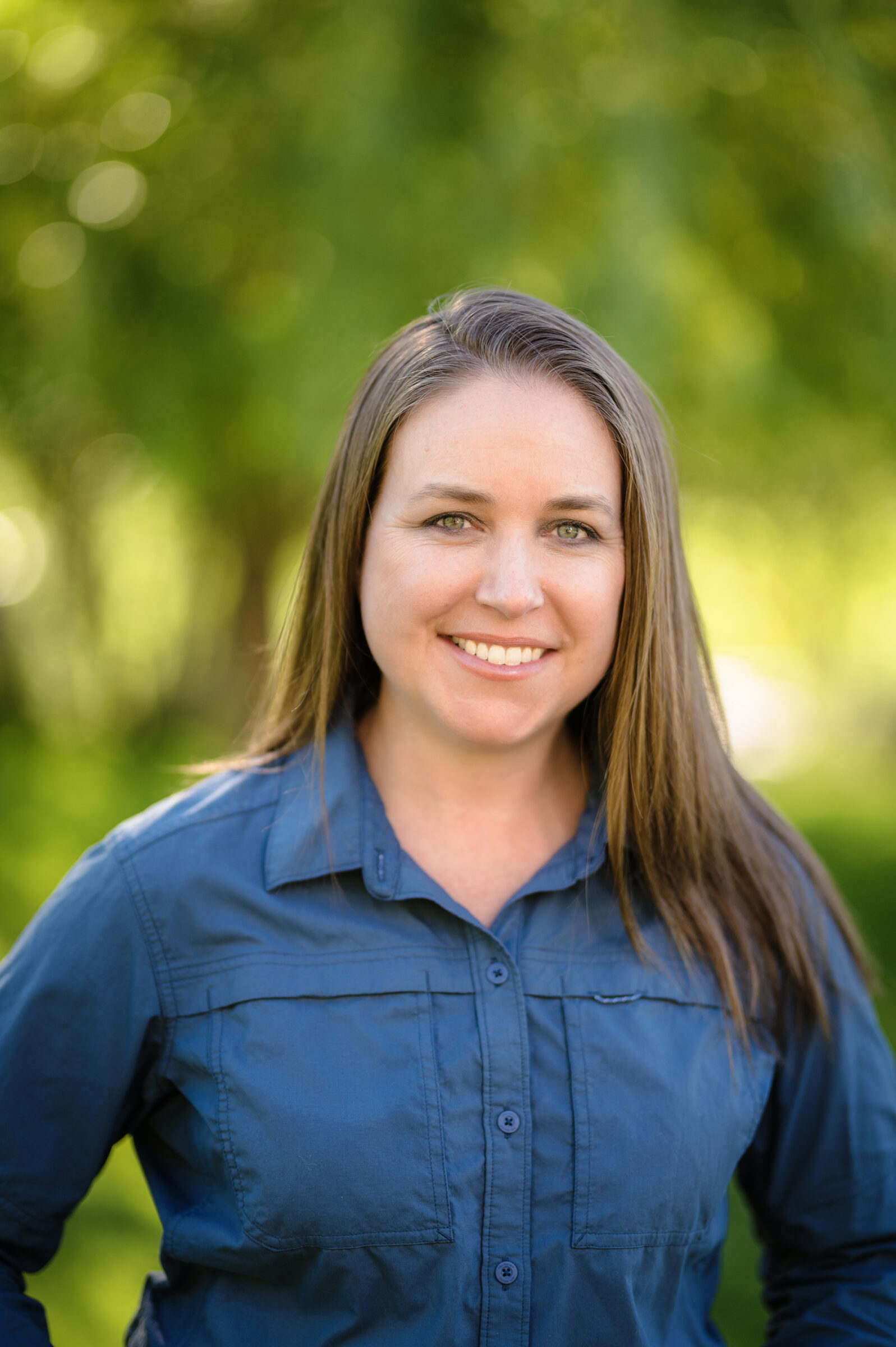
Linnea Spears-Lebrun, senior restoration ecologist
A senior restoration ecologist at SWCA Environmental Consultants based out of Durango, Colorado, Linnea is unwavering in her mission to enhance our planet. Her 18 years in ecological restoration have brought her throughout the United States to breathe life into degraded landscapes and revive nature’s grandeur.
While Linnea’s restoration endeavors have been gratifying, her perspective underwent a profound transformation as she sailed throughout Antarctica with over a hundred women and non-binary leaders this past November. For more than two weeks, the group aboard the Island Sky Voyage by Homeward Bound explored the vast frozen expanse, taking in the world’s last pristine wilderness while confronting how its ecosystem is changing due to global warming. Everyone returned with newfound empowerment, sharing a vision to leverage their leadership strengths for environmental improvements at a global level.
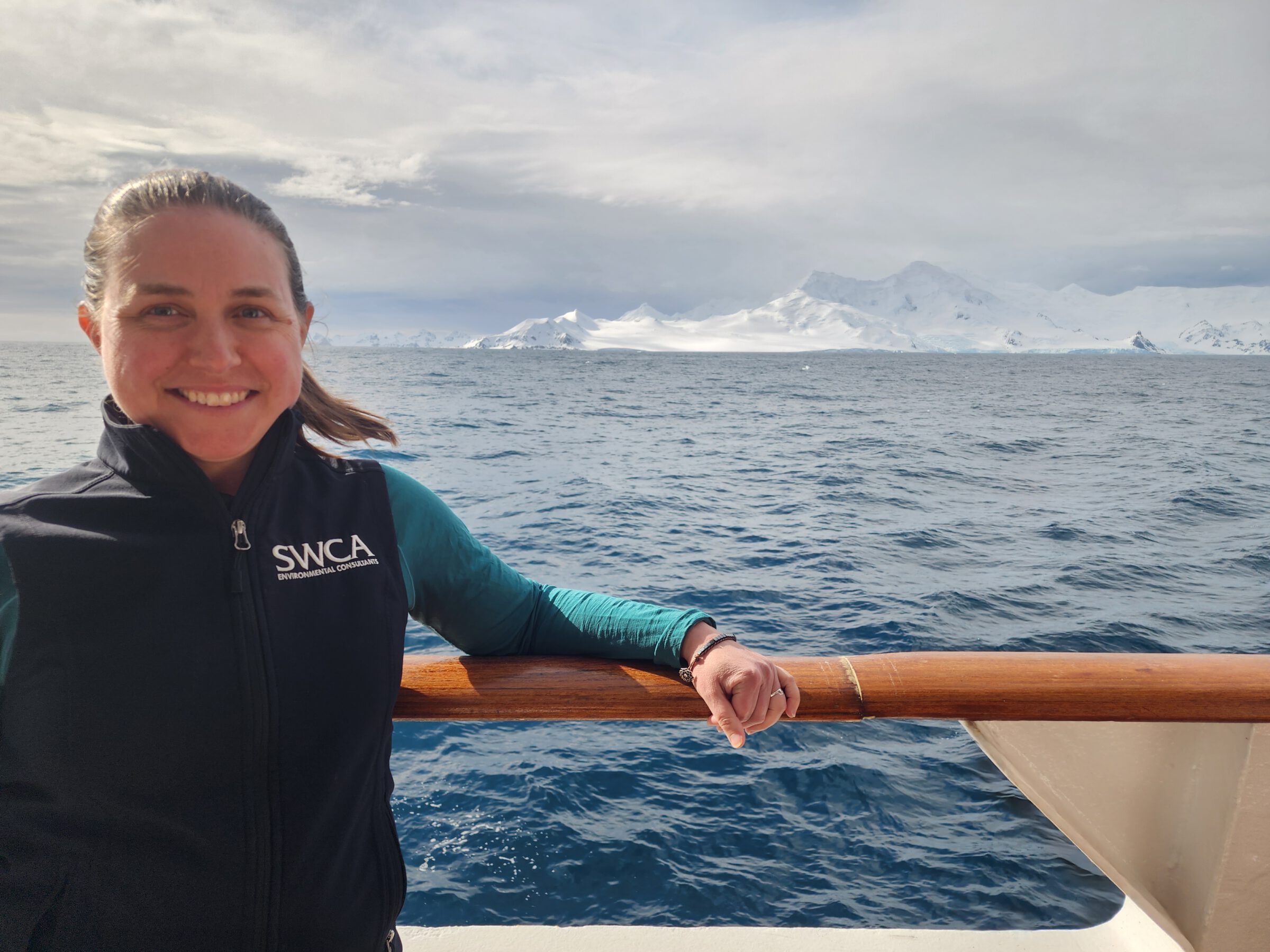
Linnea on her Homeward Bound Island Sky voyage in Antarctica.
“Visiting Antarctica and connecting with influential women brought climate change into a sharper focus for me and my career,” Linnea explains. “I’d thought about ecological restoration in the context of climate change; however, it wasn’t until I visited this side of the world – witnessing the environmental impacts to a great extent – that my sense of purpose to fight climate change really clicked.”
The climate crisis presents one of the most pressing challenges, and yet, a far-reaching opportunity for ecological restoration practitioners, according to Linnea. Drought, fire, and other extreme weather conditions pose threats to a restoration site’s success. At the same time, ecological restoration is a vital tool against climate change because healthy ecosystems absorb carbon and are more resilient to varying conditions and natural disasters.
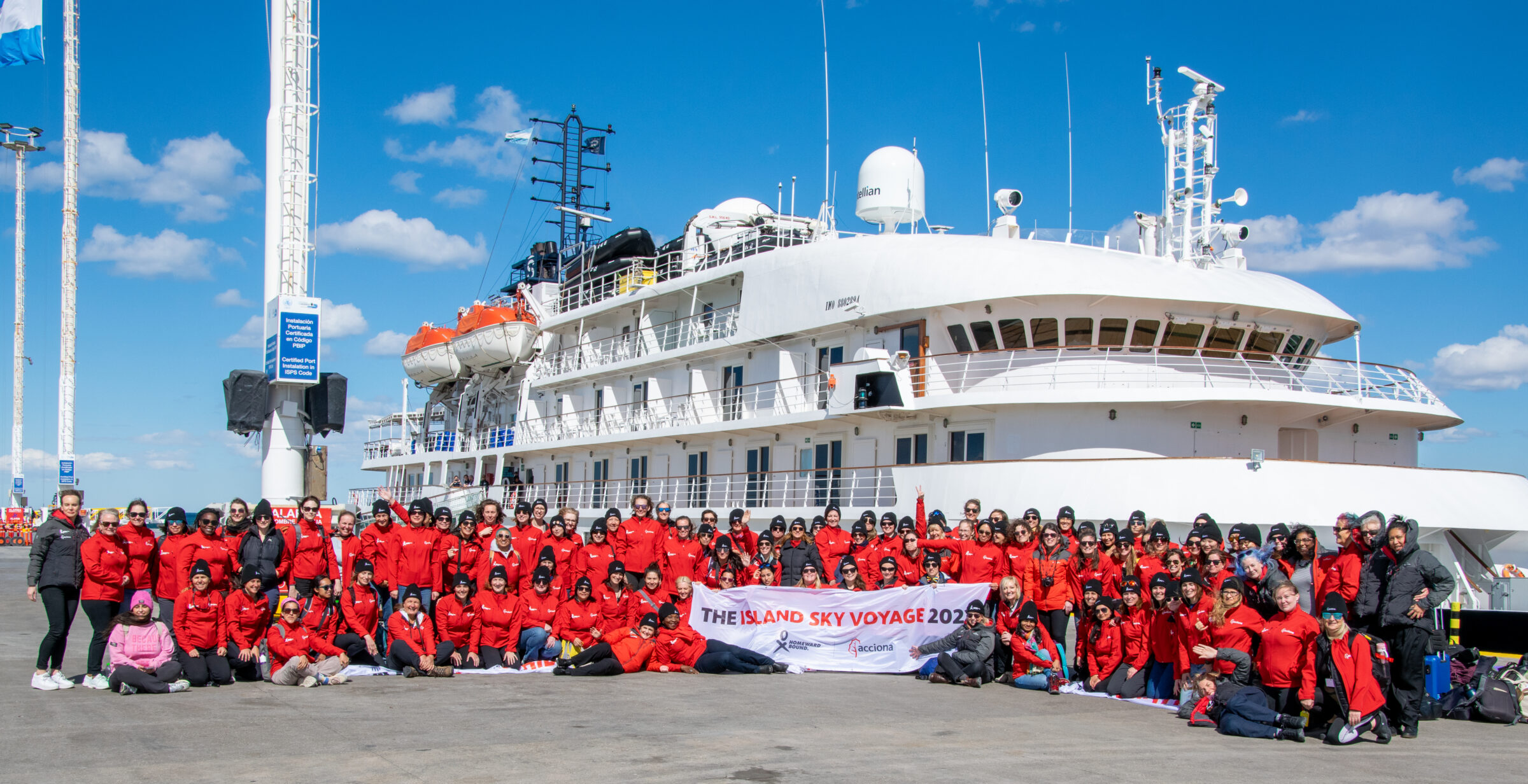
A group of 109 depart on the Homeward Bound Island Sky voyage. Photo credit Uriel Sokolowicza.
Bringing this insight back to her role at SWCA, Linnea identified exactly where she’d like to position her career looking ahead: using ecological restoration to offset carbon emissions.
“Unfortunately, some of the carbon offset projects we see implemented today are not creating as much positive impact as we’d like,” Linnea asserts. “For example, planting trees for the sake of planting trees, without consideration of the location and species, does not truly help our environment. Ecological restoration is a much more sound and sustainable strategy to sequester carbon.”
Since her return from Antarctica, Linnea felt a drive to hone her skills as a collaborative and inclusive leader in the ecological restoration space. She has already connected with SWCA’s sustainability and management consulting group, who works with companies to assess their carbon footprint and identify the financial benefits of reducing emissions or switching energy sources. Companies can only do so much to decrease their emissions, which is where ecological restoration can come in to offset the rest and help the company reach net zero emissions. Linnea is eager to provide nature-based solutions such as ecological restoration to assist clients in achieving net zero emissions.
As Linnea forges her new path in ecological restoration and sustainability and management consulting, she remains engaged in diverse projects across the country.
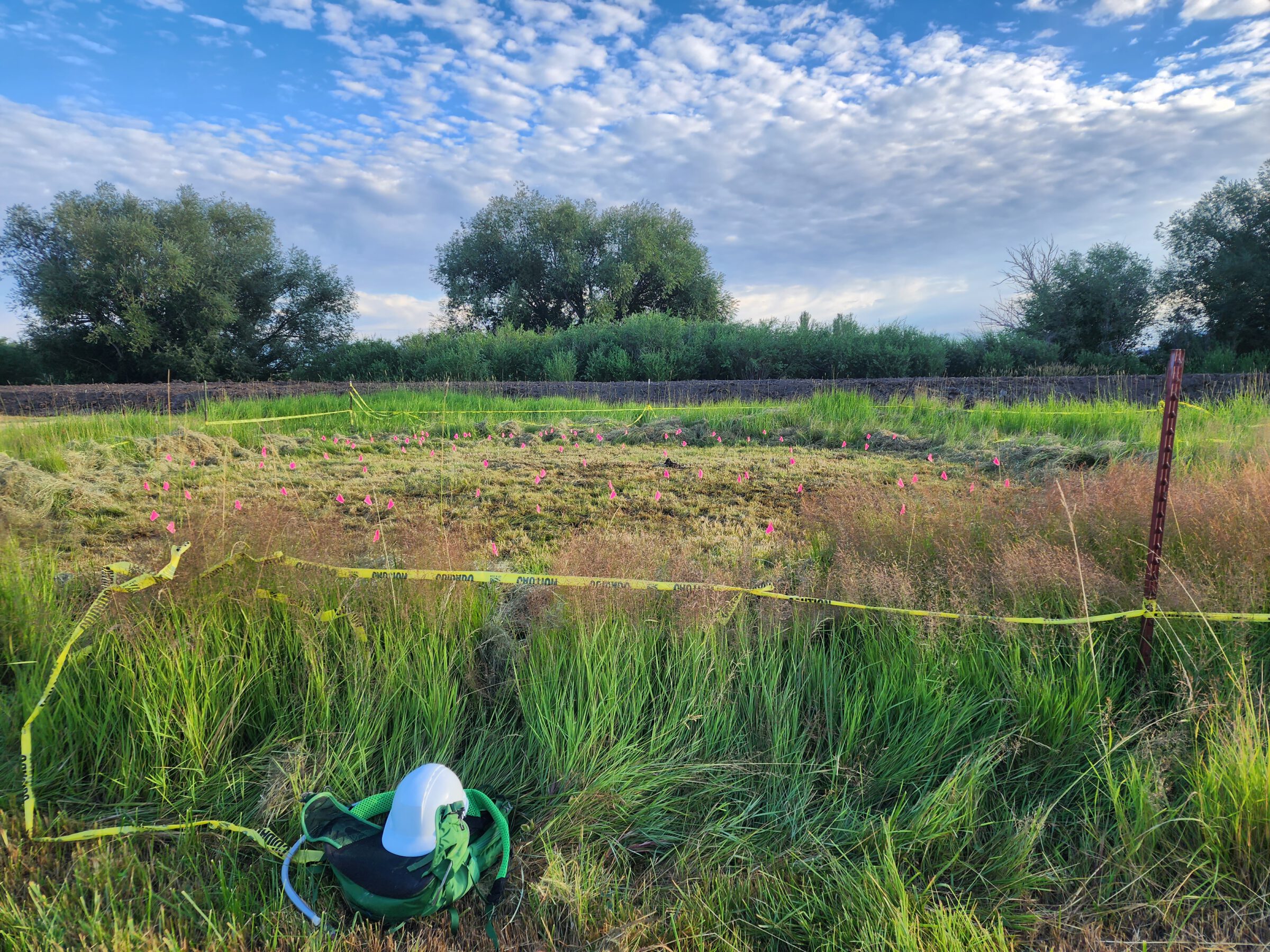
The bog from the wetland mitigation project before being relocated.
In a recent bold move, she and the SWCA restoration team orchestrated the relocation of a small bog in Utah. The bog was in the development project footprint and slated for impact, so moving it gave it a new lease on life. After Linnea and the SWCA restoration team identified an area of the site with similar hydrology, a front loader scooped up the bog piece by piece, and then a backhoe carefully maneuvered it into place. Showing the resilience of ecosystems, the bog endured the process and will receive future protection as a designated mitigation site. Linnea notes that bogs sequester carbon by maintaining a wet, anaerobic environment that prevents decomposing plants from releasing carbon back into the air, making her especially proud that the bog survived.
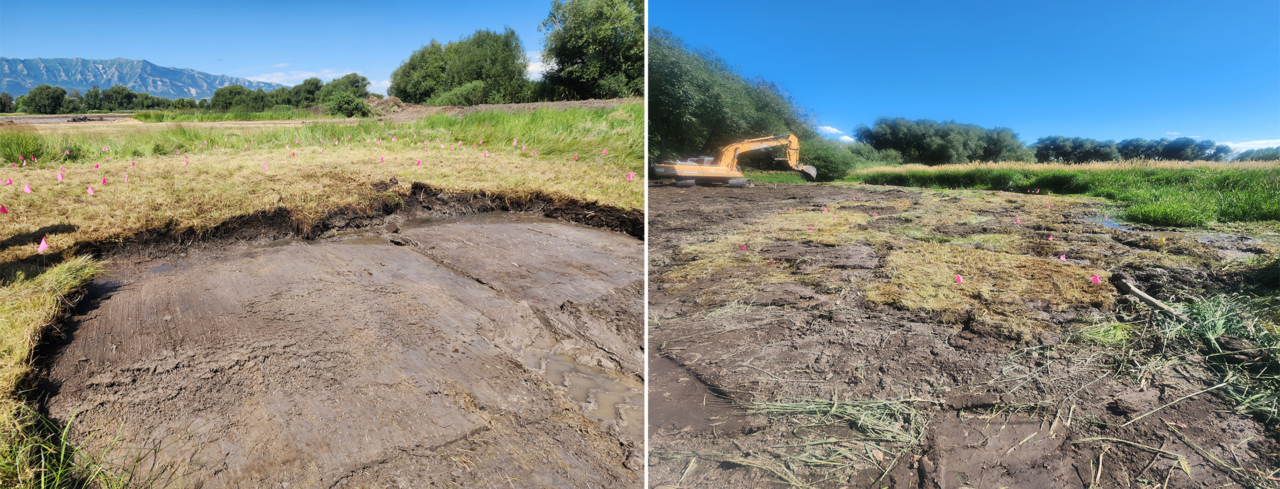
Left photo: Restoration ecologists worked with a construction contractor to scoop up the bog using a front loader. Right photo: A backhoe carefully placed the sod from the bog in its new location.
“I’m passionate about the bog relocation project because it was an opportunity to use creativity, experiment, and try something new for the sake of protecting natural resources,” Linnea describes. “This is what makes ecological restoration such a special career – watching sites flourish over time and realizing that what I do matters.”
Drawing inspiration from both local experiences and her remarkable voyage to Antarctica, Linnea’s journey suggests that she’s only at the tip of the iceberg with what she can accomplish by using ecological restoration to combat the climate crisis.
Subscribe to The Wire, SWCA’s quarterly newsletter that delivers the latest industry news, important regulatory updates, local events, and more straight to your inbox.
Original Article Link (may require registration):
https://www.ser.org/news/664799/Members-in-Action-Linnea-Spears-Lebrun-SWCA-Environmental-Consultants.htm